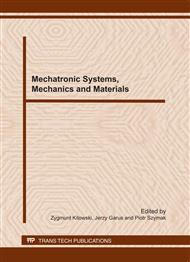p.3
p.11
p.20
p.27
p.39
p.46
p.56
p.64
p.70
Virtual Driver of Hybrid Wheeled Vehicle
Abstract:
This paper presents the application of wheeled vehicle based on a hybrid propulsion system. Describes control system structure and communication between different units of propulsion, intermediary devices and the fundamental issues of building such a network. Virtual propulsion of a wheeled vehicle hybrid drive designed for parallel connection structure of the drive units. This enabled the propulsion work more efficiently through the synergy of energy units – ICE and electric motor, and allowed ICE unit turn off in built-up areas. In the presented research results can be seen as a great contribution to the work of the propulsion system has an internal combustion engine, which not only drives the electric generator, but also a wheeled vehicles.
Info:
Periodical:
Pages:
39-45
Citation:
Online since:
November 2011
Authors:
Keywords:
Price:
Сopyright:
© 2012 Trans Tech Publications Ltd. All Rights Reserved
Share:
Citation:


